
Scooby-Doo is an American media franchise owned by Warner Bros. Entertainment and created in 1969 by writers Joe Ruby and Ken Spears through their animated series, Scooby-Doo, Where Are You!, for Hanna-Barbera. The series features four teenagers: Fred Jones, Daphne Blake, Velma Dinkley, and Shaggy Rogers, and their talking Great Dane named Scooby-Doo, who solve mysteries involving supposedly supernatural creatures through a series of antics and missteps, while traveling using a brightly colored van called the "Mystery Machine". The franchise has several live-action films and shows.
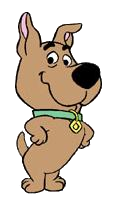
Scrappy-Doo is a fictional character in the Scooby-Doo franchise. He is a Great Dane puppy created by Hanna-Barbera Productions in 1979 and the nephew of Scooby-Doo in various incarnations of the Scooby-Doo cartoon series. Lennie Weinrib provided his voice for one season in 1979, and from 1980 on it was performed by Don Messick. In the first live-action theatrical film, video games, and commercials, he was voiced by Scott Innes, and portrayed by Rowan Atkinson when disguised as Mondavarious.

Daphne Blake is a fictional character in the Scooby-Doo franchise. Daphne, depicted as coming from a wealthy family, is noted for her beauty, red hair, purple heels, fashion sense, and her knack for getting into danger, hence the nickname "Danger-Prone Daphne".

Norville "Shaggy" Rogers is a fictional character and one of the main characters in the Scooby-Doo franchise. He is an amateur detective, and the long-time best friend of his lovable dog, Scooby-Doo.
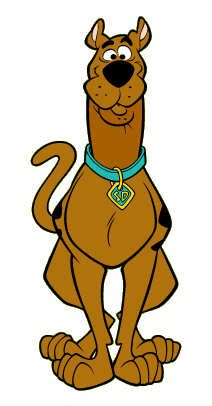
Scoobert "Scooby" Doo is the eponymous character and protagonist of the animated television franchise created in 1969 by the American animation company Hanna-Barbera. He is a male Great Dane and lifelong companion of amateur detective Shaggy Rogers, with whom he shares many personality traits. He features a mix of both canine and human behaviors, and is treated by his friends more or less as an equal. Scooby often speaks in a rhotacized way, substituting the first letters of many words with the letter 'r'. His catchphrase is "Scooby-Dooby-Doo!"

Groovie Goolies is an American animated television show that had its original run Saturday mornings on CBS between 1970 and 1972. It was rebroadcast the following season on Sunday mornings. Set at a decrepit castle, the show focused on its monstrous but good-natured and mostly friendly inhabitants. Created by Filmation, Groovie Goolies was an original creation of the studio; its characters would cross over with Filmation's Archie Comics adaptations including Sabrina the Teenage Witch and The Archie Show, as well as with the Looney Tunes cast.
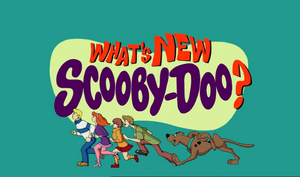
What's New, Scooby-Doo? is an American animated television series produced by Warner Bros. Animation for Kids' WB. It is the ninth incarnation of the Scooby-Doo franchise that began with Scooby-Doo, Where Are You! and the first Scooby-Doo series in a decade, since A Pup Named Scooby-Doo ended in 1991 and the first since both the foreclosure of Hanna-Barbera studios and William Hanna's death in 2001.

Scooby-Doo on Zombie Island is a 1998 American direct-to-video animated mystery comedy horror film based on the Scooby-Doo franchise. In the film, Shaggy, Scooby, Fred, Velma and Daphne reunite after a year-long hiatus from Mystery, Inc. to investigate a bayou island said to be haunted by the ghost of the pirate Morgan Moonscar. The film was directed by Jim Stenstrum, from a screenplay by Glenn Leopold.
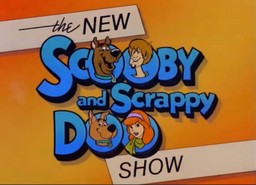
The New Scooby and Scrappy-Doo Show is an American animated television series produced by Hanna-Barbera Productions, and the sixth incarnation of the Scooby-Doo franchise. It premiered on September 10, 1983, featuring the return of Daphne, and ran for one season on ABC as a half-hour program made up of two eleven-minute short cartoons. For season two, Fred and Velma briefly return to the show after a four-year absence. The New Scooby-Doo Mysteries ran for another season on ABC.
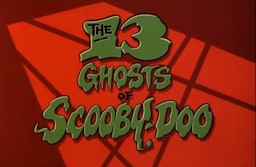
The 13 Ghosts of Scooby-Doo is an American animated television series produced by Hanna-Barbera Productions, and the seventh incarnation of the studio's Scooby-Doo franchise. It premiered on September 7, 1985, and ran for one season on ABC as a half-hour program. Thirteen episodes of the show were made in 1985. It replaced Scary Scooby Funnies, a repackaging of earlier shows; another repackaged series, Scooby's Mystery Funhouse, followed.

Scooby-Doo and the Cyber Chase is a 2001 American direct-to-video animated science fiction comedy mystery film, and the fourth in a series of direct-to-video animated films based on the Scooby-Doo franchise. It was released on October 9, 2001. The film was produced by Hanna-Barbera Cartoons and Warner Bros. Animation. In spite of its grimmer atmosphere, it also has a lighter tone, similar to its animated predecessor, Scooby-Doo and the Alien Invaders.

Scooby-Doo! and the Reluctant Werewolf is a 1988 animated comedy horror made-for-television film produced by Hanna-Barbera for syndication as part of the Hanna-Barbera Superstars 10 series. It marked Scrappy-Doo's last appearance as a protagonist in the Scooby-Doo franchise to date; he would not appear in a Scooby-Doo production again until the live-action Scooby-Doo film in 2002. It is also the last appearance of Shaggy's outfit from The 13 Ghosts of Scooby-Doo until Scooby-Doo and the Cyber Chase.

Scooby-Doo and the Ghoul School is a 1988 animated comedy horror made-for-television film produced by Hanna-Barbera for syndication as part of the Hanna-Barbera Superstars 10 series.

Mary Shelley's 1818 novel Frankenstein; or, The Modern Prometheus, and the famous character of Frankenstein's monster, have influenced popular culture for at least a century. The work has inspired numerous films, television programs, video games and derivative works. The character of the Monster remains one of the most recognized icons in horror fiction.
Monster Warriors is an original Canadian television series which aired on YTV in Canada and also on Jetix since April 2006 in the United Kingdom. It was created by Wilson Coneybeare and produced by Coneybeare Stories and distributed by Bejuba! Entertainment. The series concluded its run on July 26, 2008, with a TV movie titled Monster Warriors Finale on YTV.
HaroldSeeger was an American animated cartoon producer and director who owned his own studio, the Hal Seeger Studio. He is most famous as the creator of the 1960s animated series Batfink, Milton the Monster and Fearless Fly. During the 1930s and 1940s he was also active as a comics writer and artist, most famously for the Betty Boop comic strip and Leave It to Binky.
Muggy-Doo is a talking animal character created by Hal Seeger. Originally appearing in comic books, this character soon went on to animated cartoons as part of the 1965 Milton the Monster Show, but did not last long in either venue.

Scooby-Doo! Mystery Incorporated is an American animated television series that serves as the eleventh incarnation of the Scooby-Doo media franchise created by Hanna-Barbera, as well as the first that was not originally run on Saturday mornings. The series is produced by Warner Bros. Animation for Cartoon Network UK and premiered in the United States on Cartoon Network on April 5, 2010, with the next twelve episodes continuing, and the first episode re-airing, on July 12, 2010. The series concluded on April 5, 2013, after two seasons and fifty-two episodes.
Events in 1946 in animation.















